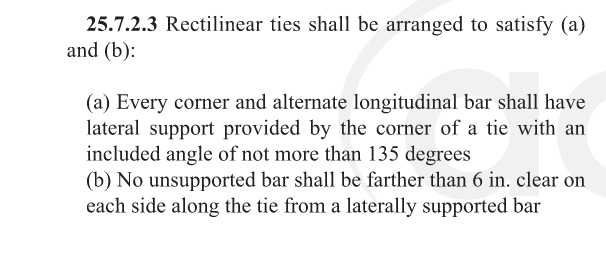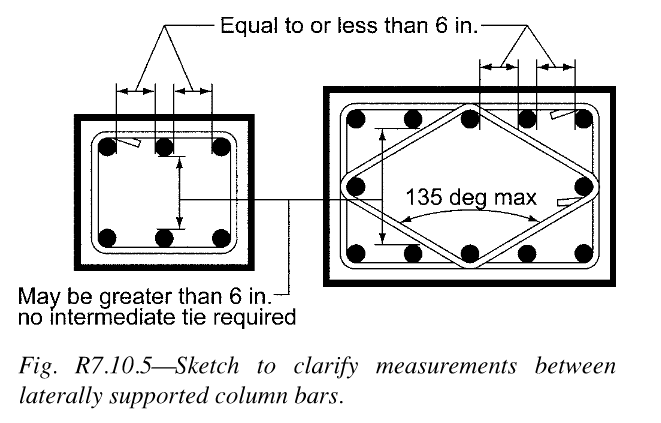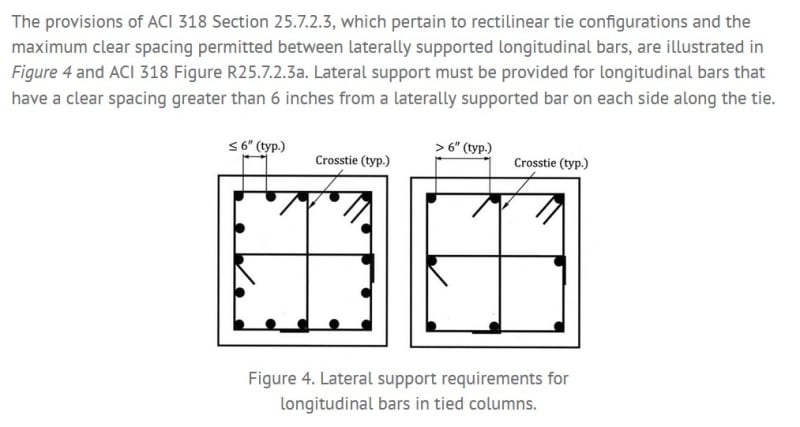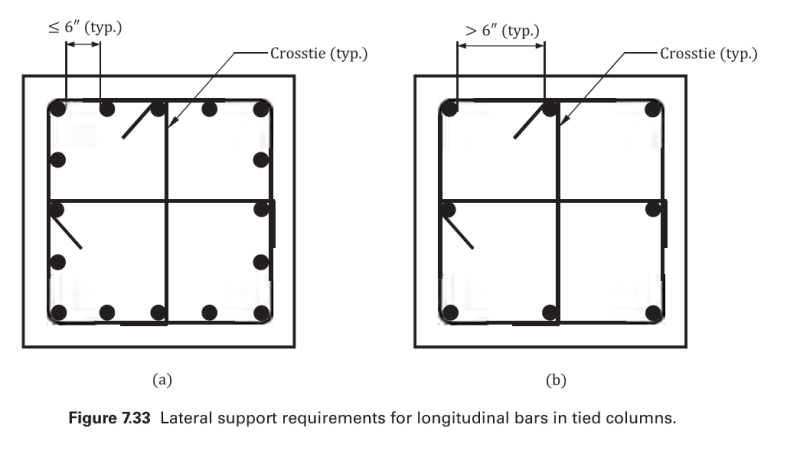Hi all - I'm more versed in the seismic world, so I'm very familiar with the 135 degree hooks at the corners of rectilinear ties. If you are not in a seismic zone - can you work with 90 degree bends instead?
ACI 318-19 seems to suggest this - especially when looking at all the blue hoop ties in the image below(Ref: ACI318-19 Fig 25.7.2.3a). However they give the orange tie in the second case 135-degree hooks which is throwing me off.
My first thought was:
1. Orange tie does not enclose all bars - so therefore it is more of a "cross tie" than a "hoop"
2. Thus, seismic hook is required at one end per crosstie requirements in 25.3.
3. Having only one 135 hook would look weird - so make both hooks 135
But this kind of falls apart with the fourth diagram, where each hoop technically doesn't enclose all of the bars but get away with 90 degree hooks. Seems like there's a consistency issue somewhere here, but I'm nto sure what exactly is at fault.
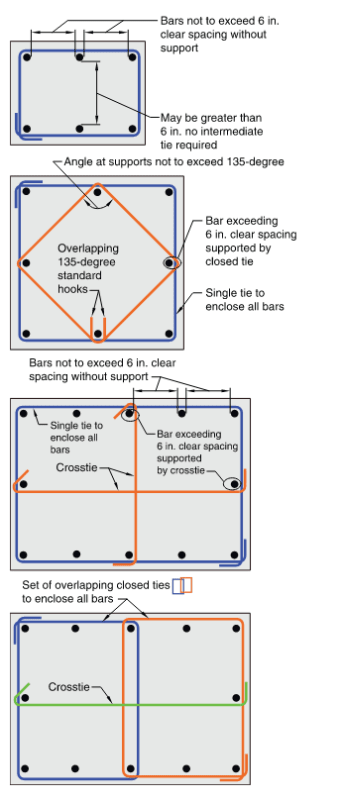
Could I just specify 135 and avoid the headache? Certainly. But for the fun of the exercise...let me know what you all think.
ACI 318-19 seems to suggest this - especially when looking at all the blue hoop ties in the image below(Ref: ACI318-19 Fig 25.7.2.3a). However they give the orange tie in the second case 135-degree hooks which is throwing me off.
My first thought was:
1. Orange tie does not enclose all bars - so therefore it is more of a "cross tie" than a "hoop"
2. Thus, seismic hook is required at one end per crosstie requirements in 25.3.
3. Having only one 135 hook would look weird - so make both hooks 135
But this kind of falls apart with the fourth diagram, where each hoop technically doesn't enclose all of the bars but get away with 90 degree hooks. Seems like there's a consistency issue somewhere here, but I'm nto sure what exactly is at fault.

Could I just specify 135 and avoid the headache? Certainly. But for the fun of the exercise...let me know what you all think.


